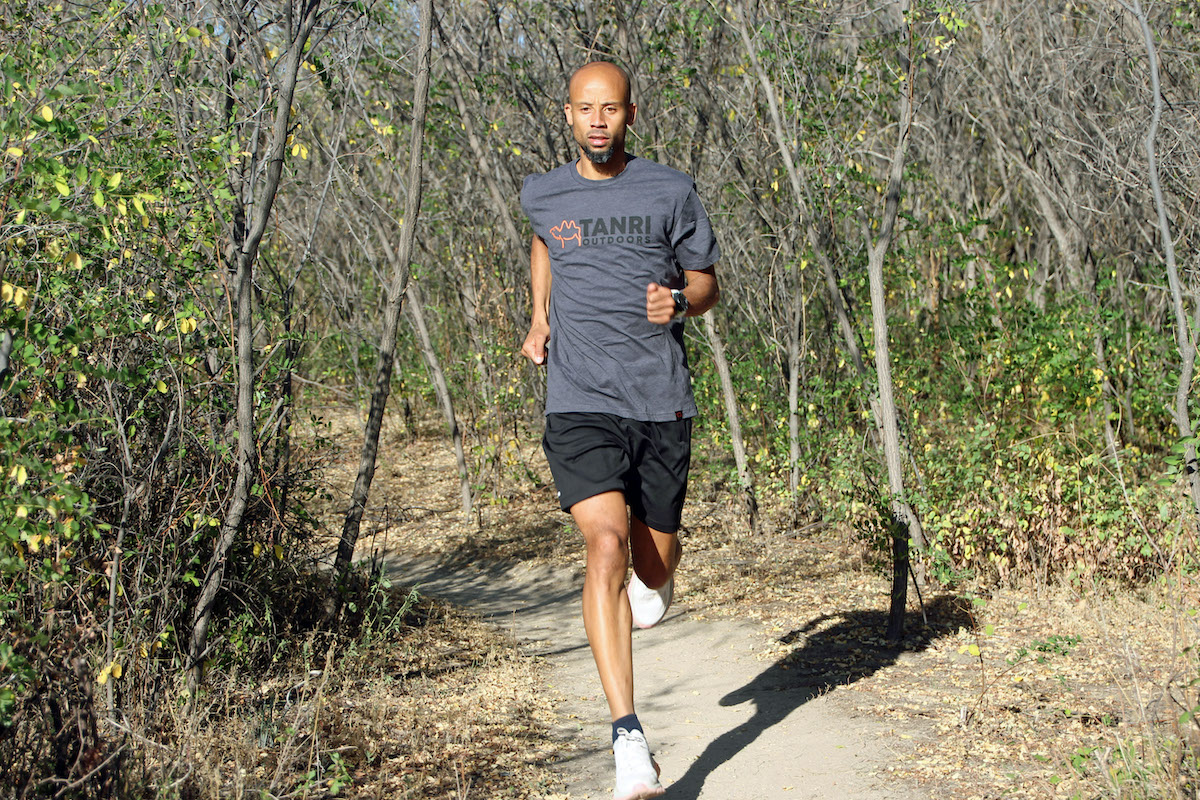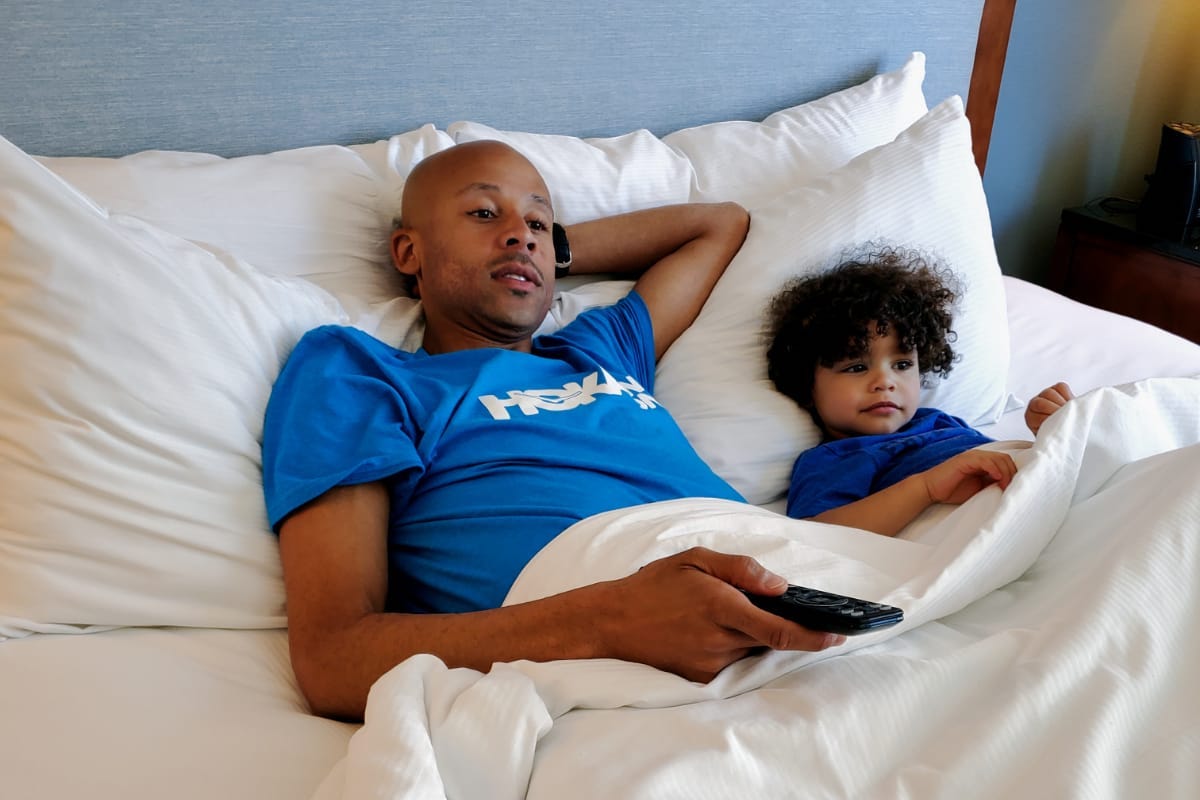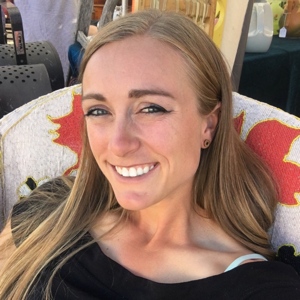Joseph Gray says he’s always been competitive, so it’s no wonder he is known for his blazing races on the trail running and mountain running circuits. An 11-time USATF Mountain Runner of the Year and multi-time World Mountain Running Champion, Gray wins most races he enters, most of them fast and furious, steep mountain courses, competing against the most competitive trail and mountain runners in the world. In 2021 alone, he’s won the Broken Arrow 26k, the Pikes Peak Ascent, and the U.S. Mountain Running Championships, just to name a few.
“I’ve always been competitive, even in the unconventional things. Whatever I’m doing, I want to be the best at it,” said Gray. “A sport like running, that is very individual, is totally different than something like basketball, where maybe someone has a bad game, a reason that is completely external to you, and you lose the game. With running, I like that individual challenge, that you can control your own destiny.”
Growing up as a self-described military brat, Gray spent his early childhood years tagging along with his family to postings around the world, including four years in Germany, but eventually landed in Washington state to finish out middle and high school. Amid some tough times when Gray admits his life wasn’t going in a great direction, he found running.
The physical education teacher at his middle school, Mark Brinkhaus, also happened to be the track coach, and Brinkhaus convinced Grey to come run. Gray’s natural talent and competitive spirit served him well, and he excelled. Gray began to set goals: to go to college, to be the first person in his family to get an undergraduate and graduate degree, to win races, to win national championships, and to represent his country in the sport. Years later, all those dreams have come true.
Throughout college at Oklahoma State University, Gray dabbled in the 3,000 meter, 5,000 meter, and steeplechase, but he really came into his own after finding trail running and mountain running. After graduating, Gray moved back to Washington for a time.
Around 2007, Gray met the accomplished trail runner and mountain runner Simon Gutierrez— an icon in the Colorado trail community who has three wins at the Pikes Peak Ascent and is a seven-time participant on the U.S. mountain running team. Gray took to the trails and found it suited his running style and abilities.
Gray later started working with coach Scott Simmons of the American Distance Project, and his wife got a job in Colorado — so in 2013, off they went to the Rockies. While Gray describes himself simply as a distance runner, he does specialize. You won’t see him in a 100-mile race anytime soon: Gray mostly competes in races at or below marathon distance.
“There’s lots of competition [in these races]. The chances of you being able to win via attrition are pretty limited. It’s very objective: how good are you, how fast can you run? It doesn’t matter if you have an iron stomach at these shorter distances.”
Despite his achievements, Gray has received less media attention and fanfare than one would expect for someone of his caliber. One might think it’s because the U.S. trail running community places such a premium on ultra-distance races, and that may be part of it, but a more pressing issue is that there are so few Black trail runners. Athletes of color in the outdoor and mountain realm have historically gotten less press, support, and sponsorships; Gray sees this changing, but slowly.
“Many Black athletes and families don’t live next to a mountain, but I don’t think that’s the limiting factor. Black people don’t see representation of themselves in [this sport]. So it seems like it’s not for us, and the media perpetuates this.
“Early in my career, I felt literally like the black sheep: there were no magazine covers, no ads, it felt very much like I was going against the grain. On the professional side of things, Black athletes weren’t getting contracts, and that hurts the next generation of Black athletes. You look to see if there are people like you.”
Gray has been vocal on the topic, and he does feel the tide of public perception and for Black athletes to get more involved in the outdoor sports arena can be swayed, but it will just take time. And as a person who has the ability to create change, Gray seems like the ideal ambassador.
“In those early years [overseas], I was exposed to different languages, cultures, I saw different colors and religions at a very young age, and it helped me become less judgmental. I can understand different opinions, be accepting of other people, that everyone’s not going to be like you. That’s a problem with America right now; people don’t have experiences outside their homogenous community.”
In addition to being a high-profile Black athlete with increasing visibility, Gray created Project Inspire Diversity, an endeavor used to help motivate and keep up-and-coming young athletes of color excited about running.
“I have been fortunate enough to have sponsors who support this cause, so I usually receive gear from my sponsors and provide the items as support for young athletes of color. I often received support from some amazing groups such as Trail Sisters of Golden, Colorado, where they helped raise funds for my project. In turn, I was able to provide footwear and some accessories for multiple young athletes in my city. The running community has been very supportive and helpful, which has been a priceless memory for me!”
In between his training, racing, and advocacy, Gray says he leads a pretty simple life, a big part of which is spending time with his family. His two kids — a boy and a girl who are three and almost two — take up much of his time, which Gray says he is happy to give.
“The one thing I’ve always wanted to give my kids is time. When you pay attention to them, they become very well-behaved, and they learn very quickly. It feels pretty boring when kids aren’t around; they provide so much entertainment. We’ve been really blessed that they’re not too crazy, running around breaking stuff,” laughed Gray.
Gray stated how much he appreciates his wife, who, in addition to having a full-time job, does a lot for the kids, and for him in his competitive career.
“We dated for years, so she was there early in my career, she’s seen it all with me. There have been times she’s had to be my manager, my massage therapist She’s super mom and also super wife.”
What does Gray do in his downtime? Well, it turns out his early years perusing the cuisines expanded his palette to the spicy side of life: he grows peppers. Spicy peppers, sweet peppers, making marinades and sauces, sharing with friends and family, experimenting with peppers even hotter than the dreaded Carolina Reaper, which is just a couple million Scoville heat units — the measurement of heat in peppers — below pepper spray. Gray describes himself as a connoisseur.
“I don’t necessarily call myself a gardener, a pepper gardener maybe; I like to grow hot stuff. I have a couple friends where we share seeds: some hybrid and rare peppers, some run of the mill. I like to mix it up, growing three or four types at a time. Some you can just eat straight up … When it comes to cooking, I love to experiment and try new recipes and see how it might come out.”
In the next three weeks, Gray said he will have more peppers than he’ll be able to eat: just in time to start sharing with friends for the holidays. So what’s next for Gray? For now, he’s not looking too far ahead, but looking forward to enjoying the holidays: wrapping presents for his kids, wearing Christmas sweaters, and spending more time with his family.
Call for Comments
- Have you ever met or raced against Joseph Gray?
- What is the hottest pepper you’d be willing to try?



